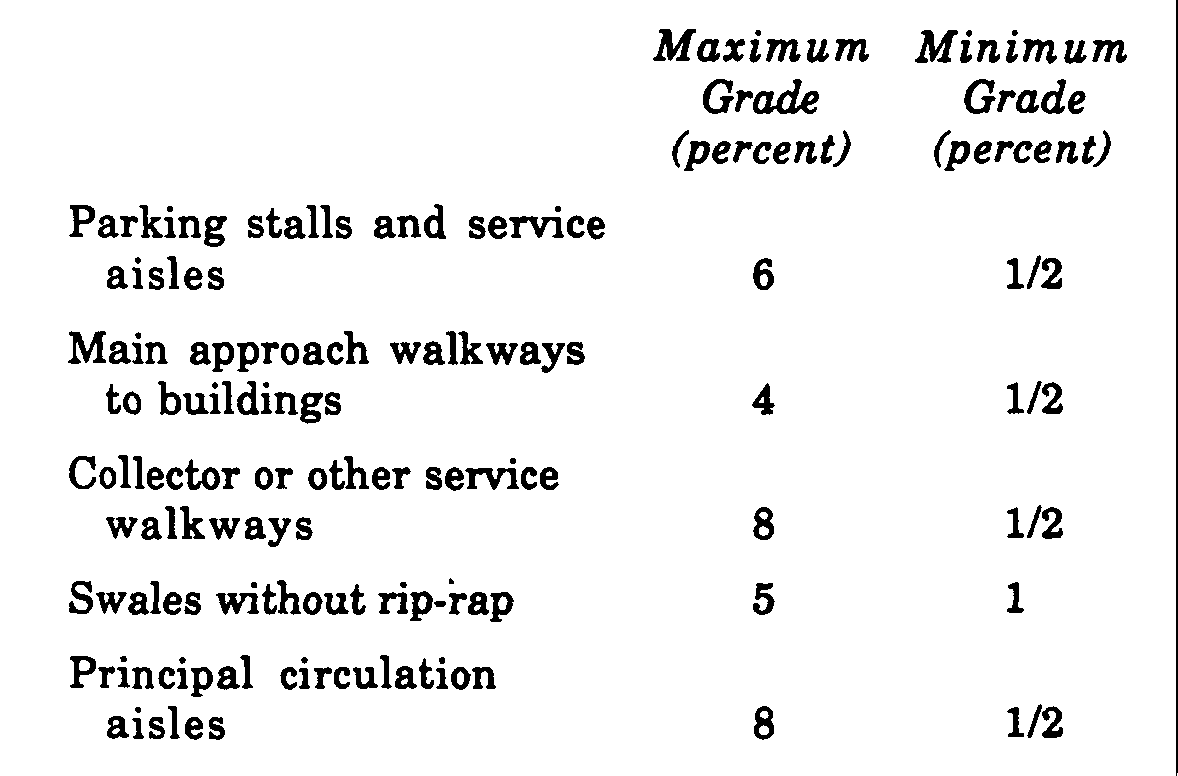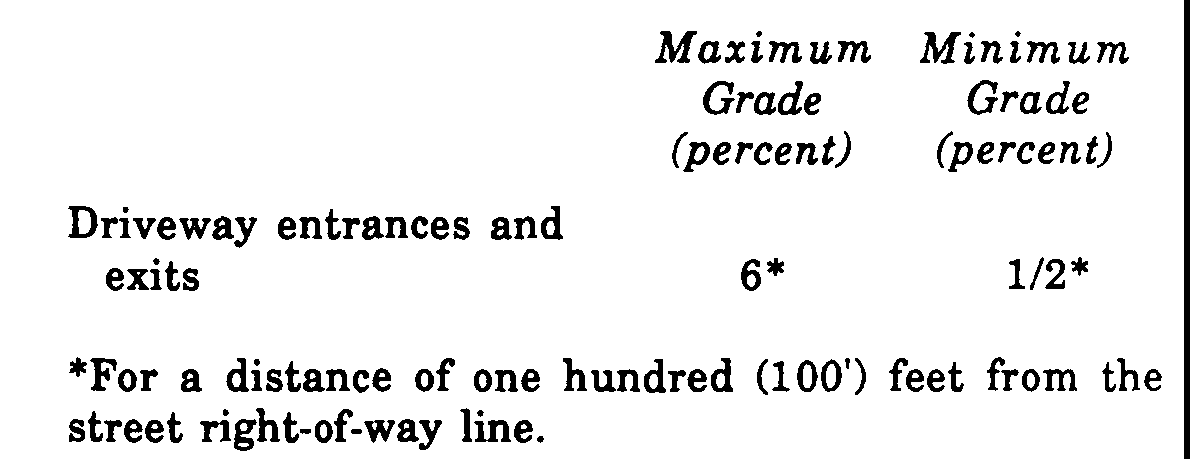3. Where a site is located at the intersection of two (2) streets, no driveway entrance or exit shall be located within fifty (50') feet of the point where the curb return of the street intersection and the curbline meet.�
4. No part of any driveway shall be located closer than twenty (20') feet to any other driveway on an adjoining parcel nor shall more than one (1) driveway be located closer than sixty (60') feet to another driveway on the same site as measured from the closest edge of any two (2) driveways along the same right-of-way line.�
5. No entrance or exit driveway shall be located on a traffic circle or on a ramp of an interchange or within fifty (50') feet of the beginning of any ramp or other portion of an interchange.�
6. Geometric Design. The geometric design of a driveway connection to a public or private street shall be governed by sound traffic engineering principles. The following guidelines are utilized in preparing a geometric design, but some deviation may be necessitated from time to time due to the many variables encountered in the course of preparing a design. The applicant should be aware, therefore, that although the driveway layout may conform to these guidelines, conditions may dictate deviations from them and requirements of the Township Engineer shall be final.�
(a) Two (2) way operation. Driveways used for two (2) way operation will intersect a public or private street at an angle to as near ninety (90) degrees as site conditions will permit and in no case will be less than sixty (60) degrees.�
(b) One (1) way operation. Driveways used for vehicles in one (1) direction of travel (right turn only) shall not form an angle smaller than forty-five (45) degrees with a public or private street.�
(c) The dimensions of driveways shall be designed to adequately accommodate the volume and character of vehicles anticipated to be attracted daily onto the land development for which a site plan is prepared. The required maximum and minimum dimensions for driveways connecting to a public or private street at ninety (90) degrees are indicated in Table 4. Driveways serving large volumes of daily traffic or traffic over twenty-five (25%) percent of which is truck traffic shall be required to utilize high to maximum dimensions. Driveways serving low daily traffic volumes or traffic less than twenty-five (25%) percent of which is truck traffic shall be permitted to use low to minimum dimensions.�
(d) Any vertical curve on a driveway shall be flat enough to prevent the dragging of any vehicle undercarriage.�
(e) Should the sidewalk be so close to the curb at a depressed curb driveway as to cause the ramp to be too steep and be likely to cause undercarriage drag, the sidewalk shall be appropriately lowered to provide a suitable ramp gradient.�
7. The surface of any driveway shall be constructed with a permanent pavement of a type specified by standards set by the Township Engineer. Such pavement shall extend to the paved portion of the public or private street pavement.�
e. Acceleration and Deceleration Lanes.�
1. Where a driveway serves a parking area of one hundred fifty (150) or more parking spaces and the road has a traffic volume exceeding seven thousand five hundred (7,500) vehicles per day, an acceleration lane may be required which is at least two hundred (200') feet long and at least thirteen (13') feet wide measured from the road curbline. A minimum thirty-five (35') foot curb return radius shall be used from the driveway to the acceleration lane.�
2. Where a driveway serves as an entrance to a land development providing one hundred fifty (150) or more parking spaces, a deceleration lane may be required for traffic turning right into the driveway from the road. The deceleration lane shall be at least two hundred (200') feet long and at least thirteen (13') feet wide measured from the road curbline. A minimum thirty-five (35') foot curb return radius shall be used from the deceleration lane into the driveway.�
f. Guardrails, Wheel Stops and Parking Lot Striping.�
1. Guardrails shall be provided in appropriate locations when same is required for safety purposes.�
2. Wheel stops, permanently anchored to the ground, may be required in appropriate locations. Parked vehicles shall not overhang or extend over sidewalk areas unless an additional sidewalk width of two and one-half (2 ') feet is provided to accommodate such overhang.�
3. Parking stalls, driveways and aisles shall be clearly marked and delineated. The approving authority may require that certain areas be maintained for firefighting purposes or other emergency purposes. These areas as well as other pavement signage shall be appropriately designated.�
g. Minimum and Maximum Grades in Parking Areas. The minimum and maximum parking area grades shall be in accordance with the following requirements:�

